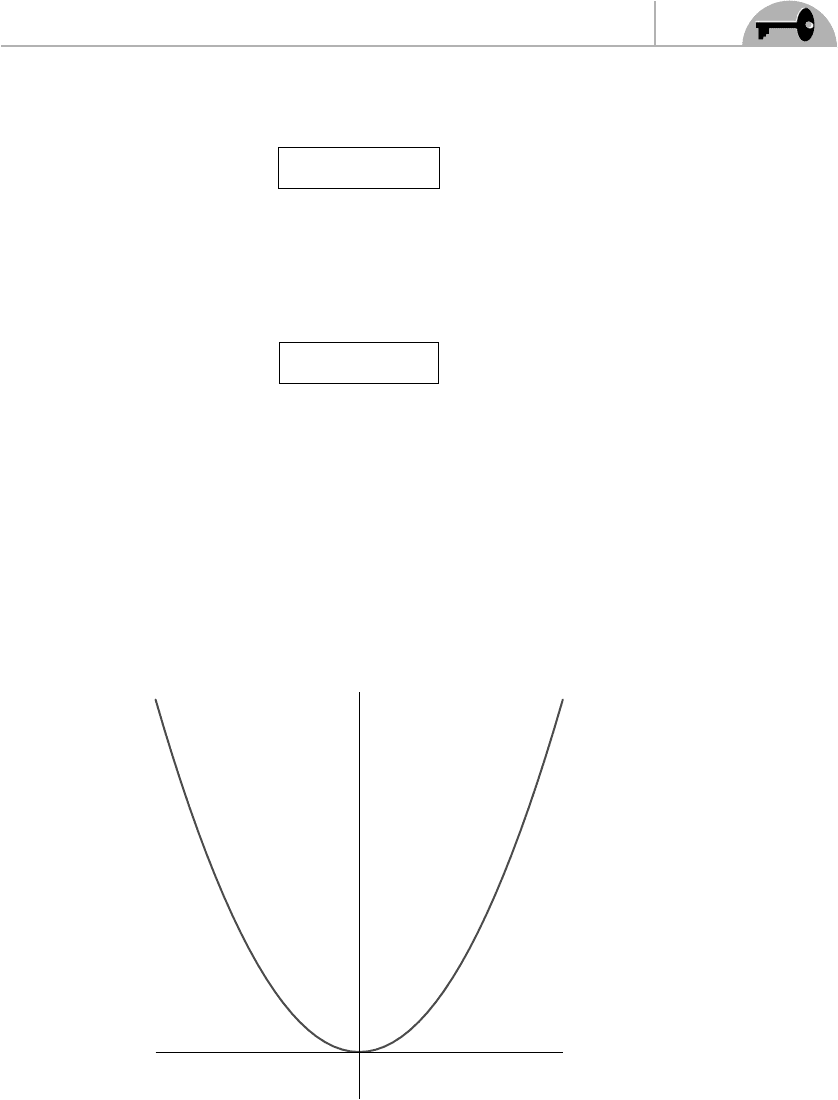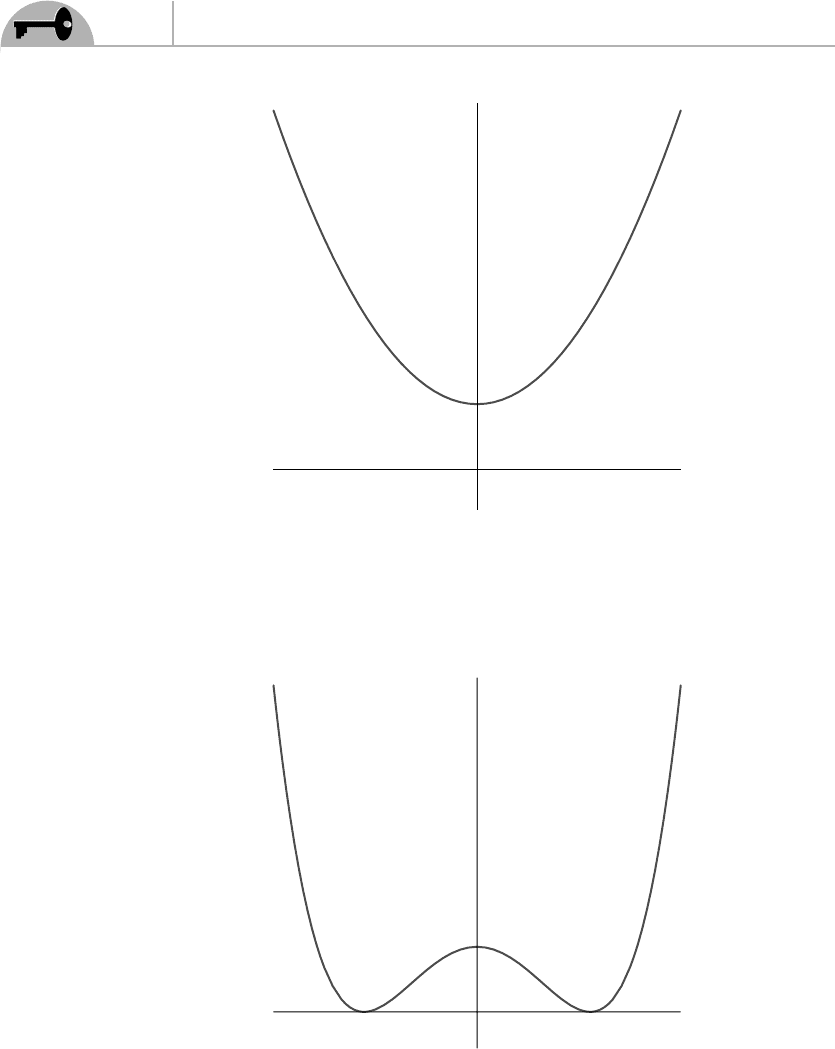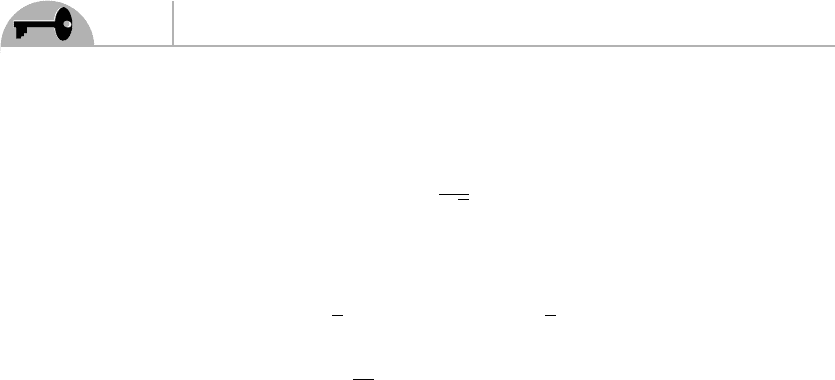Labelle P. Supersymmetry DeMYSTiFied
Подождите немного. Документ загружается.


326
Supersymmetry Demystified
We will first discuss various means to spontaneously break SUSY and then come
back to the issue of explicit SUSY breaking in Section 14.9.
14.1 Spontaneous Supersymmetry Breaking
When there is SSB, the charges generating the symmetry do not annihilate the
vacuum, i.e.,
Q|0 = 0
Let us see what consequence this has in the case of SUSY. Recall that in Section 7.5
we showed that if the charges Q
1
and Q
2
do not annihilate the vacuum, we get a
strict inequality for the vacuum expectation value (vev) of the hamiltonian:
0|H|0 > 0 (14.1)
The hamiltonian can be broken up into two parts: the kinetic energies terms
of the fields and the potential (in which we lump all the interactions among the
fields as well as the mass terms). In the vacuum, we can take the vev of the kinetic
energies terms to be zero (we are not considering field configurations with nontrivial
topology), leaving us with the vev of the potential. The only fields that may have a
nonzero vacuum expectation values without breaking Lorentz invariance are scalar
fields, so the condition (14.1) reduces to
0|V (φ
i
)|0 > 0
As we have seen in Section 10.7, the entire scalar field potential comes from the
auxiliary fields, after they are eliminated using their equations of motion. Schemat-
ically, we may write the potential as
V (φ
i
) = F
i
F
†
i
+
1
2
D
2
(14.2)
where it is understood that by F
i
, F
†
i
, and D we mean the solutions to the equations
of motion, namely,
F
†
i
=−
∂W
∂φ
i

CHAPTER 14 SUSY Breaking
327
and, for an abelian gauge group,
D = q
i
φ
†
i
φ
i
− ξ (14.3)
We have included a Fayet-Illiopoulos term ξ D in the lagrangian. We will see that
this term plays a crucial role in some types of SUSY breaking.
In the case of a nonabelian gauge group, the D
2
in Eq. (14.2) stands for D
a
D
a
,
and the solution of the equations of motion is
D
a
= g φ
†
i
T
a
φ
i
As we have mentioned before, gauge invariance precludes a Fayet-Illipoulos term
for nonabelian gauge theories.
The condition for SSB of SUSY can be restated in the following way: There will
be SSB of SUSY if, and only if, there is no possible scalar field configuration for
which 0|V |0=0.
Consider the case of a single scalar field φ, which is too simplistic but will allow
us to draw simple figures. The expectation values of four different potentials as a
function of the scalar field are shown in Figures 14.1 through 14.4.
Scalar field
Potential
Figure 14.1 Potential that does not break any symmetry.

328
Supersymmetry Demystified
Potential
Scalar field
Figure 14.2 Potential that breaks SUSY but no internal symmetry.
Scalar field
Potential
Figure 14.3 Potential that breaks an internal symmetry but not SUSY.

CHAPTER 14 SUSY Breaking
329
Potential
Scalar field
Figure 14.4 Potential that breaks both SUSY and an internal symmetry.
In Figure 14.1, no symmetry is broken. In Figure 14.2, SUSY is broken because
there are no field configurations for which the expectation value of the potential is
zero. In Figure 14.3, SUSY is not broken, but since the potential is not minimized
for φ=0, an internal (gauge) symmetry is broken. In Figure 14.4, both SUSY
and gauge symmetry are broken.
Since the potential (14.2) is a sum of squares, the condition for SSB of SUSY
can be rephrased in yet another, and more convenient form: There will be SSB of
SUSY if the potential is such that there is no possible scalar field configuration for
which 0|F
i
|0 and 0|D
a
|0 are both simultaneously equal to zero.
There are two ways to achieve this:
First case: The superpotential is such that there are no scalar field conditions
for which F
i
=F
†
i
=0 irrespective of the value of D. In other words,
the superpotential must be chosen such that
*
F
†
i
=−
∂W
∂φ
i
= 0 (14.4)
has no solutions. This is known as F-type SUSY breaking.
*
From now on we will not write explicitly the angled brackets to denote the vevs of the scalar fields or of the
potential.

330
Supersymmetry Demystified
Second case: The second possibility arises only if there is at least one Fayet-
Illiopoulos term [and therefore at least one U (1) gauge field]. Then two
scenarios are possible. In one scenario, D=0 cannot be satisfied ir-
respective of the potential in F
i
. In the second scenario, F
i
=0 and
D=0 cannot be satisfied simultaneously, so the breaking arises out of
an interplay between the two types of auxiliary fields. Both scenarios are
referred to as D-type SUSY breaking.
Let’s consider these various situations in turn.
14.2 F-Type SUSY Breaking
Here we need to pick the superpotential such that there are no values of the scalar
fields φ
i
for which Eq. (14.4) has a solution.
Consider the simple case of a single left-chiral superfield, with the superpotential
of Eq. (12.31). We will not include a term C because in the minimal supersym-
metric standard model (MSSM) there is no left-chiral superfield that is invariant
under the gauge symmetry SU(3)
C
× SU(2)
L
×U (1)
Y
, so a term linear in a chiral
superfield would break gauge invariance. Consider, then,
W =
1
2
m
2
+
1
6
y
3
To calculate F
†
, we first replace the superfield by its scalar field component φ
and then differentiate with respect to φ:
F
†
=−
∂W
∂φ
=−m φ −
1
2
y φ
2
(14.5)
Clearly, SUSY is not spontaneously broken because we can set F
†
to zero simply
by choosing φ = 0.
As a second example, consider supersymmetric quantum electrodynamics
(QED). We saw in Section 13.6 that the superpotential is W = m E
e
E
¯
e
. In terms
of the scalar component fields, this corresponds to W = m
˜
φ
e
˜
φ
¯
e
. There are two
auxiliary fields, and the two equations corresponding to Eq. (14.4) are
m
˜
φ
e
= m
˜
φ
¯
e
= 0
which clearly have the solution
˜
φ
e
=
˜
φ
¯
e
= 0.

CHAPTER 14 SUSY Breaking
331
It is not easy to construct a theory involving several left-chiral superfields
that exhibit F-type SUSY breaking. The simplest such model was worked out by
O’Raifeartaigh
34
and will be presented in the next section. The term O’Raifeartaigh
models is sometimes used to refer to all models in which F-type SUSY breaking
occurs.
14.3 The O’Raifeartaigh Model
This model requires three left-chiral superfields, whose superpotential W is taken
to be
W = m
1
3
+ g
2
2
3
− M
2
(14.6)
All three parameters, m, g, and M
2
, are taken to be real and positive. In this model,
the conditions in Eq. (14.4) read
F
†
1
=−m φ
3
= 0
F
†
2
=−g φ
2
3
+ gM
2
= 0
F
†
3
=−m φ
1
− 2 g φ
2
φ
3
= 0 (14.7)
which clearly have no solution because no value of φ
3
can fulfill the first two
equations. Therefore, SUSY is spontaneously broken. To confirm this explicitly,
we will find the masses of all the fields and show that the mass degeneracy between
the scalars and the fermions is lifted, as expected when SUSY is broken. To do
this, we must first find the vevs of the scalar fields, i.e., the values that minimize
the potential.
The potential is
V =|F
1
|
2
+|F
2
|
2
+|F
3
|
2
= m
2
|φ
3
|
2
≡V
1
+g
2
|M
2
− φ
2
3
|
2
≡V
2
+|m φ
1
+ 2 g φ
2
φ
3
|
2
≡V
3
(14.8)
Let us now find the values of the fields φ
1
, φ
2
, and φ
3
that minimize Eq. (14.8).
For any value of φ
3
, it is always possible to have V
3
equal to zero, so we only have
to minimize the first two terms of the potential, V
1
+ V
2
. The analysis is simplified

332
Supersymmetry Demystified
if we express the field φ
3
in terms of its real and imaginary parts, which we will
write as
φ
3
≡
1
√
2
(R
3
+iI
3
)
We then have
V
1
+ V
2
=
1
2
(m
2
− 2 g
2
M
2
) R
2
3
+
1
2
(m
2
+ 2 g
2
M
2
) I
2
3
+
g
2
4
R
2
3
+ I
2
3
2
+ g
2
M
4
(14.9)
We now want to find the values of R
3
and I
3
that minimize the potential. All the
terms except the first one are necessarily positive. The rest of the analysis depends
on whether the combination m
2
− 2g
2
M
2
is semipositive definite or negative. Let’s
consider these two possibilities in turn:
First case: m
2
≥ 2 g
2
M
2
If m
2
> 2 g
2
M
2
, then all the terms in Eq. (14.9) are positive, and the minimum of
V
1
+ V
2
is obviously obtained by setting both components of φ
3
equal to zero; i.e.,
R
3
= I
3
= 0. If m
2
= 2 g
2
M
2
, then the first term of Eq. (14.9) is zero and again
the minimum is attained for φ
3
= 0.
Now, let’s go back to the third term of the potential,
V
3
=|m φ
1
+ 2 g φ
2
φ
3
|
2
If we set φ
3
= 0, the minimum is clearly obtained by setting φ
1
= 0 as well, whereas
φ
2
is left completely arbitrary. It is typical in supersymmetric theories to have the
expectation value of some scalar field left arbitrary. The corresponding scalar field
then is referred to as a flat direction of the potential because we can vary the value
of the scalar field while staying at the minimum of the potential.
At the minimum of the potential, we therefore have the following vevs for the
three auxiliary fields [see Eq. (14.7)]:
F
1
= F
3
= 0 F
2
= gM
2
and the minimum value of the potential is
V
min
= g
2
M
4

CHAPTER 14 SUSY Breaking
333
We see that SUSY is broken because the minimum of the potential is not zero.
Moreover, V
min
is larger than zero, in agreement with the property 0|H |0 > 0.
Second case: m
2
< 2 g
2
M
2
In this case, all the terms in Eq. (14.9) containing the imaginary part I
3
are still
positive, the potential is still minimized for I
3
= 0, in which case the first two terms
of the potential simplify to
V
1
+ V
2
=
1
2
(m
2
− 2g
2
M
2
)R
2
3
+
1
4
g
2
R
4
3
+ g
2
M
4
which is minimized for
R
2
3
= 2 M
2
−
m
2
g
2
(14.10)
Note that this is necessarily positive because m
2
< 2 g
2
M
2
. Let’s look at the third
term of the potential when I
3
= 0:
V
3
=|m φ
1
+ 2 g φ
2
φ
3
|
2
=|m φ
1
+ 2 g φ
2
R
3
|
2
with R
3
being given by Eq. (14.10). This is minimized, and equal to zero, at the
condition that the fields φ
1
and φ
2
are related by
φ
1
=−2
g
m
(
2 M
2
−
m
2
g
2
φ
2
(14.11)
Again, we see that the expectation value of one of the fields (which we may choose
once more to be φ
2
) at the minimum of potential is left completely arbitrary.
Using the values in Eqs. (14.10) and (14.11) and I
3
= 0, we find that the minimum
value of the potential is now
V
min
= m
2
M
2
−
m
2
4g
2
Let’s now look at the mass spectrum of this theory. When scalar fields have
nonzero vacuum expectation values, figuring out the masses and the mass eigen-
states is usually complicated by the presence of terms bilinear in the fields, i.e., by

334
Supersymmetry Demystified
mixing. Let us pause the discussion on SUSY breaking to review how to compute
the masses of the scalar fields in such a situation.
14.4 Mass Spectrum: General Considerations
Consider two real scalar fields A and B with lagrangian
L =
1
2
∂
μ
A∂
μ
A +
1
2
∂
μ
B∂
μ
B − V (A, B)
Let’s say that the potential has a minimum at the vevs A = v
A
and B = v
B
. Let us
define the new fields
˜
A ≡ A − v
A
and
˜
B ≡ B − v
B
. The minimum of the potential
is then at
˜
A =
˜
B = 0. If we Taylor expand the potential around this minimum, we
find
V ( A, B) = V (
˜
A + v
A
,
˜
B + v
B
) ≈ V (v
A
, v
B
) +
˜
A
∂V
∂
˜
A
+
˜
B
∂V
∂
˜
B
+
1
2
˜
B
2
∂
2
V
∂
˜
B
2
+
1
2
˜
A
2
∂
2
V
∂
˜
A
2
+
˜
A
˜
B
∂
2
V
∂
˜
A∂
˜
B
+···
where all the derivatives of the potential are evaluated at the minimum
˜
A =
˜
B = 0.
If we are just interested in computing the mass spectrum, we can discard the first
term because it is a constant. The first derivatives are zero because they are evaluated
at a minimum. We therefore see that there is a term mixing the two fields if the
mixed derivative of the potential is not zero. Putting all this in the lagrangian, and
using the fact that ∂
μ
A = ∂
μ
˜
A and ∂
μ
B = ∂
μ
˜
B,weget
L =
1
2
∂
μ
˜
A∂
μ
˜
A +
1
2
∂
μ
˜
B∂
μ
˜
B −
1
2
V
BB
˜
B
2
−
1
2
V
AA
˜
A
2
− V
AB
˜
A
˜
B +···
where
V
AB
≡
∂
2
V
∂
˜
A∂
˜
B
˜
A=
˜
B=0
and so on.
We now see the problem: There is a mixing of the two fields. Because of this, we
cannot read off their masses directly from the lagrangian. What we need to do is to
find a linear combination of the two fields that will decouple the quadratic terms.

CHAPTER 14 SUSY Breaking
335
Using the fact that the partial derivatives commute to write V
AB
= (V
AB
+
V
BA
)/2, we see that the quadratic terms can be written in matrix form:
L
quad
=−
1
2
(
˜
A
˜
B)
V
AA
V
AB
V
BA
V
BB
˜
A
˜
B
The matrix V is usually called the squared-mass matrix M
sq
. What we need to
do is to diagonalize this matrix. The eigenstates will be the actual mass eigenstates,
and the corresponding eigenvalues are the physical (tree-level) mass squared. In
this section we are interested only in the masses, not the eigenstates, so all we really
want are the eigenvalues, which are simply
m
2
=
V
AA
+ V
BB
±
)
V
AA
− V
BB
2
+ 4 V
2
AB
2
(14.12)
where we have used V
AB
= V
BA
.
This is the approach to follow to find the masses of the scalar fields. For the
fermion masses, one does not read off the squared-mass matrix from the lagrangian,
but the mass matrix M. The squared-mass matrix is given by V = M
sq
= M
†
M,
and the square of the fermion masses can be found from Eq. (14.12).
This is all quite abstract. We will put the theory in practice in the next section.
14.5 Mass Spectrum of the
O’Raifeartaigh Model for m
2
≥ 2 g
2
M
2
Let us get back to the O’Raifeartaigh model. We will consider only the first case,
i.e., m
2
≥ 2 g
2
M
2
. In this case, both φ
1
and φ
3
have zero vevs, so they do not get
shifted. We need only shift φ
2
:
φ
2
→ φ
2
+φ
2
where, as we have seen, the vev φ
2
is completely arbitrary. We will take it to be
real. If we substitute this back into the potential, we get
V = m
2
|φ
3
|
2
+ g
2
|M
2
− φ
2
3
|
2
+|m φ
1
+ 2 g φ
2
φ
3
+ 2 g φ
2
φ
3
|
2
